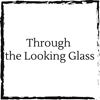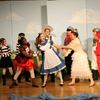




Through the Looking Glass
Before putting "Through the Looking Glass" down on paper in 1860s, Lewis Carroll told a colleague’s young daughter, Alice Liddell (the real Alice in the books), the story of talking chess pieces. The novel, of course, was a sequel to his earlier one, "Alice in Wonderland." This play is set in the early 1920s as a now elderly Alice Liddell reflects on the telling of the story. Faithful to Carroll’s expression of childhood fears of growing up, this adaptation keeps the Victorian charm and merriment by maintaining Carroll’s scenes intact. The audience is transported magically with Alice through the looking glass to a land of comic fantasy where logic is nonsense. Alice soon discovers that the landscape is marked out like a giant chessboard, with ordinary objects, people and events jumbled together with talking animals, animated chess pieces and creatures from fairy tales and folklore. About 1 hour.
